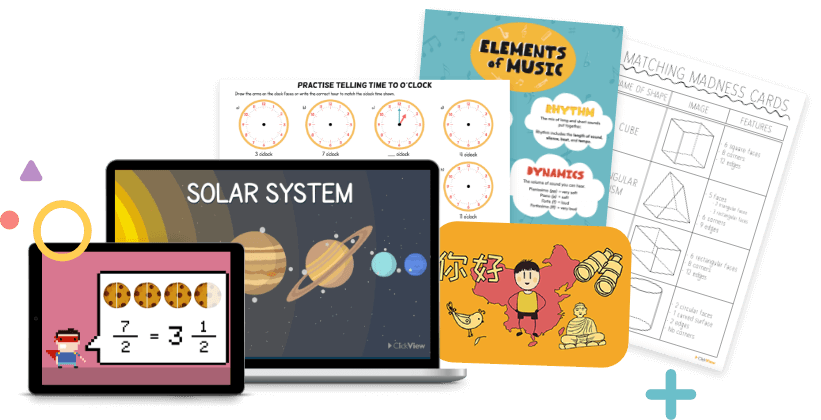10 teaching practice tips to help with behavioural management
Behavioural management is most effective when students know what they can consistently expect from you as their teacher. You will develop intervention strategies over time as you learn from experiences and refine your practice. These are some proactive steps that you can personally take to help in the development of your management style and support better teacher-student relationships.
1. Model Ideal Behaviour
Students will watch you closely in your classroom, so you need to ensure that you model the behaviour that you expect from them. In the same way that you would model an activity during a lesson, think about how you can take time to reinforce good behaviour by demonstrating the respectful social skills you want to see during the school day.
Explicitly teaching behavioural expectations can be supported by:
- Showing a clip of school dos and don’ts and pausing for class discussion
- Using a game, such as PAX Good Behaviour Game, to promote self-regulation (For Primary students)
- Developing and practicing classroom routines to provide structure
- Assisting students to choose an appropriate replacement behaviour
- Instigating an effective conflict resolution program
Constantly reacting to unruly and off-task students is a source of stress and burnout and is detrimental to student engagement. Focus on positively reinforcing the students who are acting appropriately to encourage other students to model their behaviour.
2. Dress Appropriately
Teachers work hard to gain the respect they deserve, not just in their schools, but in their communities as well. How you dress is important because you are a professional and a role model for your students.
Research consistently links teachers attire and grooming to student’s perceptions of their competence.
- Casual attire is associated with friendliness, fairness and a teacher seeming interesting.
- Moderate attire conveys a greater sense of understanding and organisation.
- Conservative attire communicates organisation, knowledge, and discipline.
You demonstrate daily how professional adults look and behave. What you wear sends a message to your students, colleagues, and community about how much respect you have for yourself, your profession and for them.
3. Maintain Professional Relationships
The Government’s Professional Teaching Standards make it clear that teachers aren’t supposed to be friends with their students. Full stop.
Maintaining a friendly, but professional relationship means being mindful of:
- Your duty of care (refer to Keeping Children Safe in Education)
- Your school’s policies
- Social media contact with students (e.g., Ofsted policy)
- Setting clear boundaries with students
- Avoiding favouritism and time alone with students
- Inappropriate conversation (including jokes)
Talk to your colleagues or executive staff to clarify any concerns about your relationship to a student before it gets out of hand. Keeping your relationships with your students professional means that you can care for them while maintaining the authority and respect necessary for successful teaching.
4. Develop Genuine Rapport
A student once desperately wanted to show me a magic trick during a lesson. It took three minutes to perform, and I was quite impressed. After that, he was settled and able to refocus and complete the activity. Studies continue to highlight that building and maintaining positive relationships with students is fundamental to successful behavioural management in the classroom.
Simple advice for kickstarting your relationship building includes:
- Learning students’ names as quickly as possible
- Interacting before and after class where possible
- Supporting their extra-curricular activities
- Showing genuine interest when responding to them
- Calling home when they have done well or need a boost
- Having a sense of humour (as much as humanly possible)
You need to actively seek out ways to connect with your students as individuals with different backgrounds, interests, and needs. Show them that you care and see them respond.
5. Develop Strong Communication Skills
Strong communication skills encompass so much more than speaking clearly. Difficulties in classroom management often stem from unclear or poor communication from a teacher.
To address students effectively, no matter their age-group or class size, think about:
- Non-verbal communication
- Controlling your emotions
- Actively listening to students
- Making sure all instructions are clear
- Being respectful of cultural differences
- Maintaining respect for your students
Don’t be embarrassed to stand in front of the mirror and practice what you want to say to your class. A mentor may also be willing to sit in on a class and give you some tips, as well.
6. Have High Expectations
When teachers have low expectations of what a student can achieve, it can affect the student’s self-esteem and influence their motivation in class. Likewise, by letting students get away with poor behaviour, we’re telling them that we don’t expect much from them. This can result in a self-fulfilling prophecy of underachievement throughout that student’s education.
Communicating high expectations for behaviour involves:
- Setting routines for classroom management (e.g. entering/leaving the room, pens and books ready)
- Establishing clear rules with fair, consistent sanctions
- Modeling what constitutes appropriate and inappropriate behaviour
- Modifying rules as necessary
- Giving feedback and support to students
Having high expectations for achievement involves:
- Recognising and rewarding effort
- Setting high achievable goals
- Providing choice for completing tasks
- Teaching the process for reaching their goals
- Working through mistakes
- Focusing on improvement
Build on students’ intrinsic motivation by using learning activities that are conducive to increasing the opportunity for success. Value student input and allow them to demonstrate their skills in a variety of ways. Verbally framing mistakes as an chance for us to grow can help alleviate anxiety and create a safe classroom atmosphere. Hold high behavioural expectations for your students because you want them in your classroom and because you believe in them.
7. Focus on the Future Needs of Your Students
Great pedagogy is key to the value that our students see in their education. Effective, modern education looks at the evolving nature of skillsets that will be required by the workplace our students will enter.
You can increase student agency and engagement while addressing their future needs by:
- Incorporating digital literacy and technology in teaching and learning
- Demonstrating real life applications for learning
- Allowing students choice in topic selection, project design and how tasks are completed
- Asking for students to respond to current world issues in class activities
- Asking for and responding to student feedback on lessons and resources
Our comprehensive library allows you direct access to free-to-air programmes on the ClickView TV page. You can bring the important issues of the day into your classroom for your students to respond to.
8. Build Community
Realise that a school is a community involving teachers, Principals, executive staff, SLSOs, caretakers, counselors and parents. Ideally you will be able to develop a support network at your school to help your professional development, to assist and support colleagues and to benefit from their assistance and support as well.
Teachers should also look at ways to embrace the cultural influences of the wider community to enrich learning opportunities for their students.
Opportunity for this include:
- Speaking to your principal about engaging with the community
- Collaborating with people across the world using modern technology
- Looking for ways that you and your students can volunteer for disadvantaged groups or community service projects
- Improving communication between families and your school and listening to input from the PTA
Bringing the community in schools helps to alleviate a sense of social isolation for students and their families by promoting a sense of connectedness and belonging.
9. Reflect on Your Teaching
Critically evaluate your teaching practice by asking how and why certain things are working and others are not. The aim is to break down preconceived beliefs and perceptions that may work to form a negative view of your teaching ability, enabling a more constructive view.
Critical reflection can help you discover new approaches to behavioural challenges by helping you to:
- Reframe classroom situations
- View situations from different viewpoints
- Reposition negative experiences
- Discover positive potential in a situation
- Be responsive to student needs
- Become more deliberate and purposeful
Sharing your experiences with a close colleague, or maybe in your department meeting is highly beneficial because you can receive feedback and insight on how you can shape your experience to promote growth as a teacher.
10. Take Mental and Physical Breaks from Teaching
Between unmotivated students and workload pressures, teaching can be challenging and stressful. Resilience is essential to sustaining a career in education. This means that you have to take care of yourself, otherwise, your students might suffer from having a stressed-out teacher.
Prioritising your well-being can involve:
- Making time for a healthy lunch will fuel you for your classes
- Carving out time for daily exercise
- Setting boundaries from worktime to homelife
- Taking a mental health day
- Using your holidays to unwind – you have them for a reason
Don’t feel guilty if you need a day off from teaching; taking breaks is necessary for your health. Your students and the school can and will survive a day or two without you. Sometimes, a short break is necessary to refocus and refresh and prevent burnout. Just make sure you leave enough work for the supply teacher.
Related Videos
Learn more about ClickView
ClickView has an extensive library of educational videos and teaching resources. Discover how the ClickView Team can help your school use video effectively for deeper subject understanding in the classroom.






